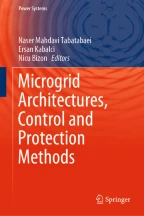
One of the most important issues in power grids is the outage problem that occurs due to weaknesses of the power system infrastructure or the occurrence of human or natural faults in the power system. The issue of complete deletion of power outages is unlikely due to unpredictable nature of major faults. After a fault, it is necessary to isolate the fault location as soon as possible. Thus, the energy path may be interrupted to some of the loads. However, new technologies or advanced methods can be used to reduce the interruptions duration. By appearance of smart grids and developing its level of intelligence, it is possible to automatically detect a fault in the shortest time, isolate it from the system and feed healthy parts of the system on a different path. The set of automatic activities that occur after a fault occurrence to achieve previous goals is called self-healing. In other words, Self-healing of the distribution system means changing the distribution network structure after fault in order to feed disconnected loads while maintaining the network’s electrical constraints. Undoubtedly, self-healing is one of the main abilities of the smart grids with respect to traditional systems to automatically retrieve system after fault occurrence or keep away system from critical conditions. Self-healing usually consists of three steps: fault location, isolation and system restoration (FLISR). The large number of lines, branches, and equipment of the distribution network can complicate this process. In this chapter, definition, requirements and challenges of self-healing are introduced and various approaches which have been recently proposed by researchers are assessed. Also some tools and methods like demand response, load shedding, distributed energy resources and autonomous microgrids which can facilitate self-healing process are assessed.
This is a preview of subscription content, log in via an institution to check access.